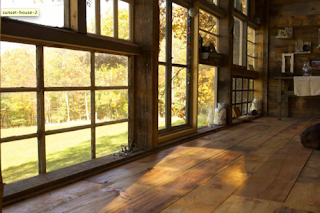 |
| Sunset House, Tiny House Swoon |
***
According to Wikipedia's entry on the Small House Movement,
In the United States the average size of new single family homes grew from 1,780 square feet (165 m2) in 1978 to 2,479 square feet (230.3 m2) in 2007, and to 2,662 square feet (247.3 m2) in 2013, despite a decrease in the size of the average family. Reasons for this include increased material wealth and prestige.
The small house movement is a return to houses of less than 1,000 square feet (93 m2).Sometimes there is a distinction made between small--less than 1000 sq.ft.--and tiny--less than 400 sq.ft. A resource for information on the tiny house is The Tiny Life, a site with a lot of information about living tiny. 11 Tiny Houses looks a number of different approaches to building a tiny house. Some of these builds remind me of living off the grid. Note that many tiny houses are built on wheels, making them sort of home-made RVs.
For more background on tiny houses, take a look at Time Magazine's Tiny Houses With Big Ambitions. Also, there's a documentary on Vimeo titled Living Small.
***
 |
| The $8000 tiny house, Loving Tiny Life |
***
TinyHouseBuild reports on a tiny house you can build for $8000. One article worth note is The Incredible $8,000 Tiny House: Serious Saving Strategies While You Build. The builders of this house have a site, Loving Tiny Life, that talks about their experiences.Two photo essays about small houses are These tiny homes are full of big ideas and 44 of the Most Impressive Tiny Houses You've Ever Seen.
Stock house plans can be found at sites like America's Best and Jacobsen Homes. But the prices can range from several hundreds to thousands of dollars. It's best to do some research at a site like Home Style Choices first.
If you're wondering what living in a tiny house might feel like, check out this video.
***
***
-- Marge





























